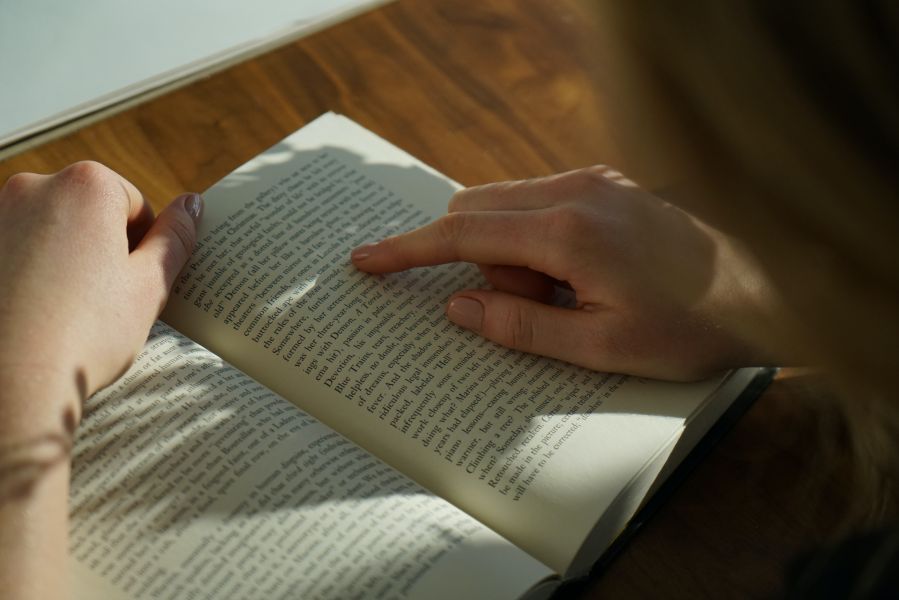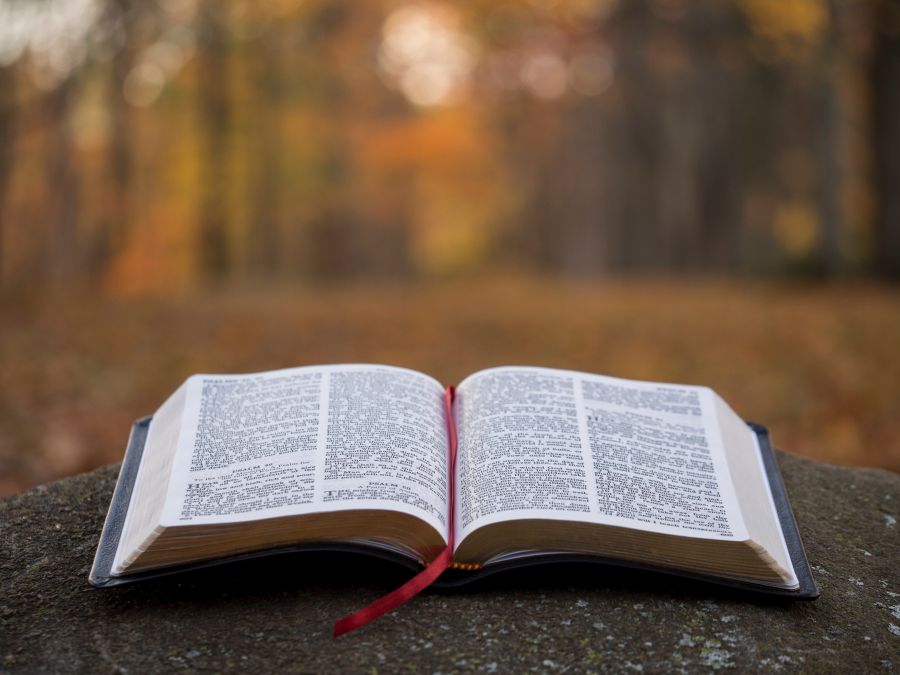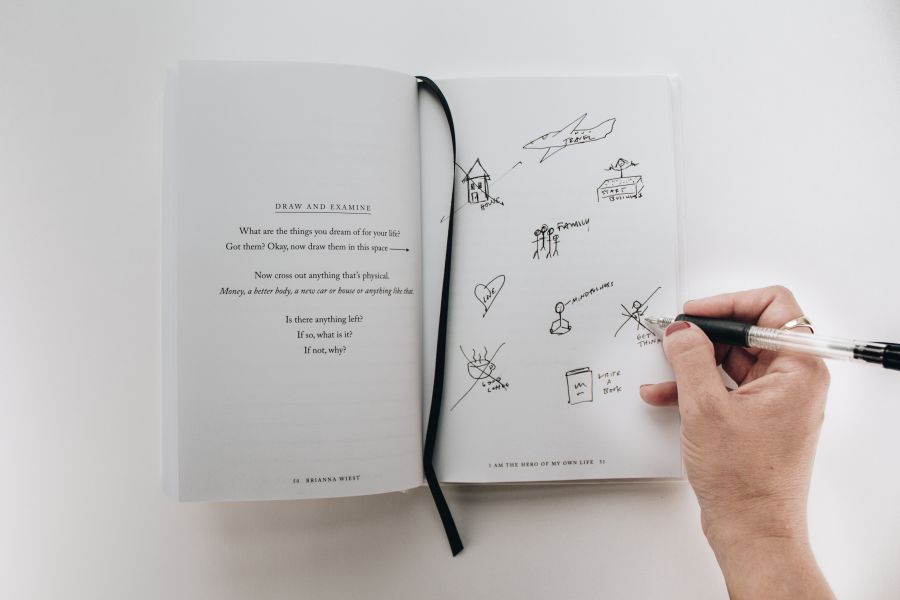篇一:Dr. Sun Yatsen’s Mausoleum
Among the historical and cultural attractions in Nanjing, the best known is Dr. Sun Yatsen’s Mausoleum.
Dr. Sun Yatsen’s Mausoleum sits on the southern slope of the Purple Mountain in the eastern suburbs of the city.Designed by a young architect Lu Yanzhi, the mausoleum took more than 3 years to build and cost 1.5 million silver dollars.The construction began on March 12, 1926 and completed in 1929 when Dr. Sun Yatsen was buried there on June 1.
Dr. Sun Yatsen, also named Sun Wen or Sun Zhongshan, is considered as the father of the Chinese democratic revolution.Born in a peasant family in Guangdong Province in 1866, he had his primary education in Honolulu, Hawaii sponsored by his elder brother from 1878 to 1883.He was so sad when he saw the poverty of the country upon his return.China had been a super power for centuries. But since the middle of Qing Dynasty in the 1800’s, China began to decline, which owed a great deal to the corruptions and incompetence of the Qing government. Foreign invasions and peasant rebellions made it even worse. The Opium War in 1840 ended with the “Treaty of Nanjing”. China was forced to pay an indemnity of 21 million silver dollars and cede Hong Kong to the Great Britain and open 5 free port cities to the westerners, which were Guangzhou, Xiamen, Fuzhou, Ningbo and Shanghai.Following were the wars again launched by France in 1883 and Japan in 1894.The Chinese people lived in a miserable life. They were referred to the “sick man of the Orient” by the westerners.Dr. Sun Yatsen dreamed to save the nation by practicing medicine and that led him to Hong Kong to learn medicine when he was 21 years old.However, it did not work.The reality made him give up his medical career in his hometown and Macao but turn to politics in 1893.
From then on, he kept petitioning to the Qing government for reforms but was never responded.At great disappointment, he left the country later and went canvassing extensively in the United States of America, Europe and Japan, trying to win the sympathy and support from the overseas Chinese.With the funds raised, he organized “Revive China League” - China’s first bourgeois organization.The following 1905 witnessed the founding of the “Chinese Revolutionary League” headed by Dr. Sun Yatsen, a party with a clear-cut program of “Expel Tartars, Restore China, Establish Republic & Equalize Land.”Dr. Sun Yatsen also put forth 3 democratic principles of “Nationalism, Democracy & People’s Livelihood” as his political goal.The armed movements against the Qing government took place continuously.
The most important event following was the 1911 Revolution in Wuhan led by Dr. Sun Yatsen, which drove the last emperor of the Qing Dynasty out of the Forbidden City in Beijing, marking the end of the old dynastic system in China.In the same year, the representatives of 17 provinces met in Nanjing and elected Dr. Sun Yatsen president of the provisional government of the Republic of China.On January 1, 1912 it was in Nanjing where the first republic in Chinese history was founded and Dr. Sun Yatsen inaugurated his presidency.
Unfortunately the new republic was threatened by powerful warlords in the north.To avoid political crisis and save the republic, Dr. Sun Yatsen compromised conditionally with the major northern warlord named Yuan Shikai who had been pursuing the national power for a long time.He resigned at the end of March 1912, but never stopped pursuing his goal.
Soon after that, China went into chaotic civil wars again.The situation led to a series of movements like “the Second Revolution,” “Save the Republic,” “Restore the Legislation” and “the Northern Expeditions” in the following years.Dr. Sun Yatsen spent most of his time dealing with warlords.Not until 1921, Dr. Sun Yatsen resumed his presidency in Guangzhou.At the First National Congress of the Chinese Kuomintang in 1924, he adopted the policy of “Alliance with Russia and Communists, Assistance to Peasants and Workers” and officially acknowledged the cooperation between the Nationalist Party and Communist Party in running the government.
In November of 1924, Dr. Sun Yatsen, despite his poor health, made an expedition to the north with his ambition to eliminate warlords, expel imperialists and abrogate unequal treaties.He was warmly greeted by thousands of people upon his arrival in Beijing.He met with many politicians and warlords, trying to persuade them to get united to build a new China.But the result did not look optimistic.He became very sick due to hard work and had to be hospitalized.The diagnosis turned out he was suffering an advanced-stage liver cancer.When he realized it would not be very long for him to stay in this world, he dictated his assistant 3 last wills, one to his party, one to the Russian government and the other to his wife Madam Song Qingling.On March 12, 1925 Dr. Sun Yatsen passed away in Beijing Union Hospital.
Dr. Sun Yatsen is a great man because he devoted 40 years of his life to pursuing his dream to overthrow the feudal monarchy and build an untied democratic China.
Why was Dr. Sun Yatsen buried in Nanjing instead of in his hometown or Beijing where he died?The mausoleum site was first recommended to Dr. Sun Yatsen by the abbot of Linggu Temple for its good geomantic omen.One day in April, 1912 when he went hunting to the site with his friends, Dr. Sun Yatsen was really so amazed by the beautiful environment that he wished the people would allow him to be buried there after his death.He expressed this desire again in his sickbed in 1925.
Dr. Sun Yatsen’s Mausoleum is designed in the shape of a liberty bell, intending to remind people never to get self-contented.The whole architecture, from the gateway, to the main entrance, tablet pavilion, memorial hall and the tomb vault, lies on the north-south axis with 392 steps and 10 platforms in between.The buildings are all constructed with natural granite and marbles and covered by blue glazed-tile roofs.
Opposite to the bronze incense-burner off the square, stands the 12-metre high gateway of three arches with Dr. Sun Yatsen’s handwriting “Fraternity” carved on its front top.The 480-meter long tomb avenue, lined with pine, gingko and maple trees, leads to the main entrance.Dr. Sun Yatsen’s motto “The World Belongs to the People” can be seen right above the door in the middle.Walking through it, the first building you will see is the tablet pavilion which houses a huge tombstone. The tombstone is engraved with “Premier Dr. Sun is buried here by the Chinese Nationalist Party on June 1, 1929.”From there, a panoramic view of the memorial hall can be obtained.However, there are still 290 steps to go before you reach the memorial hall on the top.The memorial hall stands 73.33 meters above the ground. In the center of the memorial hall sits the Italian white marble statue of Dr. Sun Yatsen mounted on a pedestal carved in bas-relief by a Polish sculptor. The surrounding walls are inscribed with the national constitution written by Dr. Sun Yatsen.Beyond the memorial hall is the tomb vault. Standing by the pool inside, if you look down, you bow to see Dr. Sun Yatsen’s reclining marble statue with his body buried 5 meters underneath.If you look up, you find the emblem of the Nationalist Party on the ceiling.
When you wrap up your homage tour and step down, you will not only enjoy a bird’s-eye view of beautiful Nanjing, but also feel totally relieved because you do not see any more those 392 steps you have conquered.Not until then, you will not understand how great Dr. Sun Yatsen is.
篇二:Ming Tomb
The 600-year-old Ming Tomb, lying at the southern foot of the Purple Mountain, is the tomb for Zhu Yuanzhang, the first emperor of the Ming Dynasty from 1368 to 1398.
Born into a poor peasant family in Fengyang County, Anhui Province in 1328, Zhu Yuanzhang lost his parents in his childhood and became a monk at Huangjue Temple. In 1352, he joined the Red Turban Army led by Guo Zixin. He married Guo Zixin’s adopted daughter and became the commanding general later. Zhu Yuanzhang took over Nanjing in 1356 and made it the capital in 1368 when he conquered the rest parts of China and established the Ming Dynasty.
Zhu Yuanzhang began to have his tomb built in 1381 when his wife died. The empress was buried in the tomb in 1383. But Emperor Zhu Yuanzhang died in 1398 and was buried here in the same year.
Now we are reaching the tomb gate, known as Grand Golden Gate. Ming Tomb is divided into two parts. The first part is from Horse Dismounting Arch Gate to Linxin Gate, 1800 meters long, serving as the tomb avenue. The second part is the tomb itself. There was originally a grand red wall, 22.5 kilometers long, enclosing the whole tomb area. The tomb complex was very large with many splendid buildings. 100000 pines were planted and 1000 deer raised inside. Unfortunately, this large group of buildings was ruined during the wartime, once between the Ming and Qing Dynasties and the other time when Taiping Peasant Army was suppressed by the Qing Dynasty army. All the wooden structures were destroyed. However we can still see the exquisite stone carvings from the stone bases and imagine how it looked like 600 years ago.
At the Horse Dismounting Arch Gate, the inscription can be seen "All the officials must dismount from their horsebacks here". This shows the absolute dignity of Emperor Zhu Yuanzhang at that time.
Here we are at the square city, also called the stone tablet house. Its top is gone but the surrounding walls and four archways are still remaining, just like a castle. The Great Ming Dynasty Wonderful Achievements and Merits Tablet, 8.78 meters high, built in 1413 by the third emperor of the Ming Dynasty, is the highest ancient tablet in Nanjing. There are altogether 2746 Chinese characters on the tablet, which praise Emperor Zhu Yuanzhang for his deeds and merits by his fourth son who made himself the third emperor of the Ming Dynasty.
Why did Zhu Di, the third emperor erect this stone tablet? Zhu Yuanzhang had 26 sons. His first son died in 1392, so his first grandson, then 16, was nominated to be the successor to Emperor Zhu Yuanzhang. In 1398, 22-year-old Zhu Yunwen became the second emperor after his grandfather’s death. However his uncle Zhu Di was then in Beijing and found some excuse to launch a war against him. The four-year-long war ended with the uncle's victory. Zhu Di grabbed the power and became the third emperor. When Zhu Di praised Emperor Zhu Yuanzhang, he was actually praising himself. Originally, Zhu Di planned to have a 72-meter-high stone tablet carved out of Yangshan hill in the eastern suburb of Nanjing. Since it was too heavy to be moved, he gave up his plan and had this small one made.
The stone animal under the tablet looks like a tortoise. It is actually the first son of the dragon, well known for its strength. Its name is Bi Xi and he is always put there to carry imperial tablets. According to the legend, when the stone tablet was carved, the chief mason could hardly have it mount on the back of Bi Xi because it was too heavy. He was very worried and did not know what to do. One day he had a dream, in which he was told that only when the tablet and Bi Xi did not see each other, he would make the mounting possible. Clever as he was, he covered Bi Xi with mud and pushed the tablet onto the back of Bi Xi as you can see now.
When we pass the imperial bridge, we can see the sacred path lined with 24 animals. There are six kinds of animals, one pair standing and the other kneeling. The standing pair is working and the kneeling resting. They work on two shifts. The significance of these animals is to show the country's power and emperor's influence, to drive away the evil spirits and guard the tomb. The first 2 pairs of animals are lions, king of the beats. The second 2 pairs of animals are called Bi Xie, a mythical animal, suggesting justice. The following pairs of animals include camels, elephants, unicorns and horses. The camel is known as boat in the desert and symbol of prosperity. Each elephant weighs 80 tons and symbolizes peace. The unicorn represents good luck while Horse loyalty.
You may wonder how these heavy stone animals were moved to this place. The fact is in the cold winter, workers splashed water on the ground and pushed the stone animals to the present locations on the freezing ice.
Two 6.25 meter-high stone pillars serve as altars for the sacrificial offerings. The sacred avenue makes a right turn here just because the Plum Blossom Hill stands in the way. The hill is the tomb for Sun Quan, the first emperor of Eastern Wu Kingdom. When Ming Tomb was constructed, some people suggested that Sun Quan's tomb should be moved away. But Emperor Zhu Yuanzhang commented that Sun Quan was a good fellow and should stay. This showed the emperor’s modesty. Among the 8 stone figures, four are ministers and the other are warriors.
When we cross the imperial bridge and walk a short distance, we reach the tomb itself. The arch gate, imperial stone tablet pavilion, the grand hall, square city, grand terrace, treasure city, treasure top are all on the north-south axis, a typical layout of the ancient Chinese architecture.
The arch gate has 5 doorways, with yellow glazed tiles, red walls and doors. But this gate was rebuilt in 1999.
In the stone tablet pavilion built in early Qing Dynasty, we can see an inscription by Emperor Kang Xi, the second emperor of Qing Dynasty, "Running the state as prosperously as Tang and Song Dynasties". Since Qing rulers were Manchurians, Emperor Kangxi was worried that the Han people wouldn't follow him. This stone tablet indicated Emperor Kang Xi's desire to be peaceful with the Hans. He made 6 trips down to southern China from Beijing and visited Ming Tomb for 5 times. This tablet was erected here in 1699 during his third visit. We can tell from this tablet that Emperor Kang Xi was no wonder a great emperor.
The tomb is at the foot of Purple Mountain. It has not been excavated because of the technical reasons of preservation.
The tomb site was selected by Zhu Yuanzhang himself. However there had been a Buddhist temple here. Zhu Yuangzhang paced up and down and looked upset each time when he was here. The wise abbot in the temple felt it and suggested to the emperor that the temple should be moved because his teacher told him so in his dream. The emperor was happy when he heard this and had the temple rebuilt to the east of his tomb.
篇三:Linggu Temple
Now we are on the way to the Linggu Temple Park. On our right there is a fishing terrace with beige glazed tiles built in 1937. It was a monument to Dr. Sun Yatsen from the National Military Academy, which was founded by Dr. Sun Yatsen in 1924.
Linggu Temple lies about one and a half kilometers to the east of Dr. Sun Yatsen 's Mausoleum. It was called Jiangshan Temple in the ancient times and its original site was in Dulongfu at the foot of the Purple Mountain. However, in the early days of the Ming Dynasty (1368-1644), Emperor Zhu Yuanzhang chose that place to build his tomb, thus the temple had to be moved and rebuilt at the present site and was renamed as the Linggu Temple with an inscription "The First Buddhist Forest " at the entrance to the mountain. Inside the entrance there is a secluded footpath with thousands of pine trees, verdant and luxuriant, so it is called the "Valley of Spirit Deep in Pines".It is one of the 48 attractions in Nanjing.
Inside the temple there is the Beamless Hall built in 1381 in the Ming dynasty. The hall, 53.8 meters long, 37.85 meters wide and 22 meters high, was built entirely of bricks and stones from top to bottom without a piece of wood. There are nine overlapping ridges and three dagobas decorating the top ridges. In size, the Beamless Hall stands first and foremost of its kind in China. It was built more than 200 years earlier than the other five of the same kind in the other areas: Xiangtong Temple at Wutai Mountain; Yongzuo Temple in Taiyuan, Shanxi Province; Wannian Temple on Ermei Mountain in Sichuan; Kaiyuan Temple in Shzhou and Longchang Temple in Jurong County. It far surpasses them all in solidity and magnificence. No wonder it is considered a masterpiece of Chinese stone-brick buildings. The difficulty involved in its construction and the complexity of techniques adopted testify the wisdom of the architectural technology of the time in China.
Beyond the Beamless Hall are the Wind-through-pines Pavilion and a nine-storeyed, over sixty-meter-high octagonal pagoda, with a corridor encircled by stone rails on each storey. Inside the pagoda a spiral staircase winds to the top through the nine stories. When one gets to the top story and gaze into the distance, one can get a view of the entire mausoleum area.
篇四:City Wall
The imposing city wall, as high as a five-story building, is the good impression of the visitors to Nanjing.
The building of the wall began in 1366, ordered by Zhu Yuanzhang who, two years later, founded the Ming Dynasty (1368-1644). More than 200,000 people worked on the project and many of them died before the wall was completed in 1368.
The wall was 33.678 kilometers in circumference and 14.21 meters high on average. It was the longest city wall in the world and the city enclosed by it remained the world's largest until the 17thcentury.
In order to guarantee the quality of the wall, Zhu Yuanzhang had tight control over the making of all bricks. The brick makers and the officials were responsible for overseeing the quality. In case a brick was found not up to the standard, all of them were supposed to be punished.
Different from the square-shaped city walls of most ancient Chinese cities, Nanjing's wall followed the natural terrain and was built on a foundation of huge rocks. The bricks were cemented in with a mortar of lime mixed with tung oil and glutinous rice gruel. Many parts of the wall are still in good condition.
The city wall has 24 gates, among which the Zhonghua (China) Gate, formerly called the Treasure Pot Gate, is the largest. Covering an area of 15,168 square meters, 20 meters high, the gate has 4 entrances with 4 doors. Behind the first conventional double panel wooden door, there are 3 other 23-centimeter-thick vertically sliding stone doors. The heavy stone doors are lifted and dropped with the help of a mechanical winch. If enemy troops broke through the first wooden door, they could be separated and trapped inside by the dropping of the other 3 stone doors. This strategy is known in China as "beating dogs behind a bolted door."
The first entrance is in a three-tier building in which 27 tunnels are built. These tunnels are big enough to accommodate more than 3,000 soldiers and store large quantity of food and ammunitions. On its both sides there are wide horse ramps. At the top, a rostrum allows a commanding view. Unfortunately, this rostrum and parts of the wall were destroyed by the Japanese during the Second World War.
Now the Nanjing Municipal Government plans to have part of the city wall repaired and some of the city gates renovated.
篇五:Confucius Temple
To the south of Nanjing, sits the Confucius Temple on the bank of the Qinhuai River in the old town. Built in the Song Dynasty, it is the ritual place of worshipping and offering sacrifices to Confucius. But now the whole area, after its recent renovation and restoration, becomes a replica of old local life and typical architecture in Ming and Qing styles. Accomplished with the secondary reconstructing project on the basis of its original scale in 1997, the dainty snacks street, Wang's and Xie's old residences in Wuyi Lane and the Oriental Art Courtyard have been restored to increase the cultural atmosphere in the temple area.
Former Residence of Wang's and Xie's at Wuyi (Black Clothes) Lane.
The place was the former army garrison of Wu Kingdom, which dates back to over 1,700 years ago. The soldiers wore black clothes at that time, hence the name, Wuyi Lane. In early East Jin Dynasty, Prime Minister Wang Dao lived here. Wuyi Lane gradually became the residence area for Wang's and Xie's (Xie An was also a high-ranking official during East Jin Dynasty). During the mid-Tang Dynasty, poet Lin Yuxi visited Wuyi Lane and sighed in his famous poem, "The swallows from the residence of wang's and Xie's are now entering the ordinary people's houses". The poem gives us a faint idea of the splendor of Wuyi Lane during the East Jin Dynasty. In 1997, the Qinhuai District People's Government renovated Wuyi Lane and Former Residence of Wang's and Xie's. It provides a wonderful place for tourists to understand the history of Nanjing during the six dynasties (Wu Kingdom, East Jin, Song, Qi, Liang and Chen dynasties, 229AD-589AD). Inside the residence there are many paintings, books and carvings of historic and artistic value.
Located on the Qinhuai River at the Confucius Temple Area, Nanjing Oriental Art Gallery is a building made of blue bricks and tiny tiles. Its graceful courtyard, secluded corridors, doors and windows with carvings and lattices reflect the style of Ming and Qing Dynasties. The art gallery was also called "Qifeng Gallery", since it was built by Zhu Qifeng, who lived in the period of the late Ming and early Qing Dynasty in Anhui Province. The gallery served as a place for the men in Zhu family to study for the imperial examination. This typical Anhui style building is the only one well preserved from Ming and Qing period at Confucius Temple area.
Fold Art Exhibition
Displayed here include kites, scented bags, door paintings, batik, coloured string knots, paper-cutting, masks, tree-root carvings, pyrograph, eccentric stones, and South China style paintings and calligraphy, Rain flower pebbles and woodcarvings.
Shadow Play
The 1,600-year-old shadow play only exists in China's Heilongjiang, Henan and Nanjing. Nanjing Shadow Play Troupe can play over a dozen of acts shadow play. When invited, the troupe can play for at hotel.
Local Delicacies
Nanjing Oriental Art Gallery has a restaurant with 50 seats. People can try the delicacies of Qinhuai River area.
Confucius Temple is located at the center of the old town of Nanjing. First build in the Song Dynasty; Confucius Temple was a place where students came to pay respect to Confucius. It was gradually renovated and expanded to a place with a group of Ming and Qing style buildings. A street of local delicacies, Former Residence of Wang's and Xie's at Wuyi Lane, and Nangjing Oriental Art Gallery were rebuilt and renovated in1997. Confucius Temple Area becomes a commercial and tourist site. It is a good place for tourists to understand traditional Chinese culture.
Jiangnan Imperial Examination Center was located to east of Confucius Temple. It was first built during Song Dynasty in a grand scale. It was called Jiangnan Examination Center because there was Jiangnan Province in Qing Dynasty. Chinese emperors began to select officials through imperial examination from Sui Dynasty in the 7thcentury.
Jiangnan Imperial Examination Center had its heyday during early Ming Dynasty when Nanjing was the capital of China. It was for the examinations at province level. Visitors today can see a watchtower, where the invigilators watched the students during the examinations, a good number of stone tablets and 40 cubicles where the students took the examinations in the daytime and slept at night. Sometimes visitors can also see a demonstration of the imperial examination.
相关文章
松花江导游词2023-06-17 15:09:17
关于黄山的导游词精选2023-06-02 22:30:24
湖北梁子湖导游词2023-06-12 08:53:58
盐城导游词2023-06-15 02:13:48
中国文化遗产导游词2023-06-06 02:08:41
颐和园导游词作文400字2023-06-17 06:21:49
上海对外经贸大学和北京交通大学(威海校区)对比哪个好(排名分数线区2024-03-31 16:25:18
河北高考排名237950名物理能上什么大学(能报哪些学校)2024-03-31 16:19:23
山东城市建设职业学院在山东招生人数和招生计划 多少人2024-03-31 16:15:16
上海农林职业技术学院在湖南招生人数和招生计划 多少人2024-03-31 16:12:52
吉林农业科技学院在湖南招生人数和招生计划 多少人2024-03-31 16:09:19
安徽高考多少分可以上云南经贸外事职业学院 招生人数和最低分2024-03-31 16:04:52
景点导游词(十五篇)2023-06-11 20:10:27
四川九寨沟导游词(精选十五篇)2023-06-03 11:44:39
湖北省有名景点导游词2023-06-18 14:24:56





